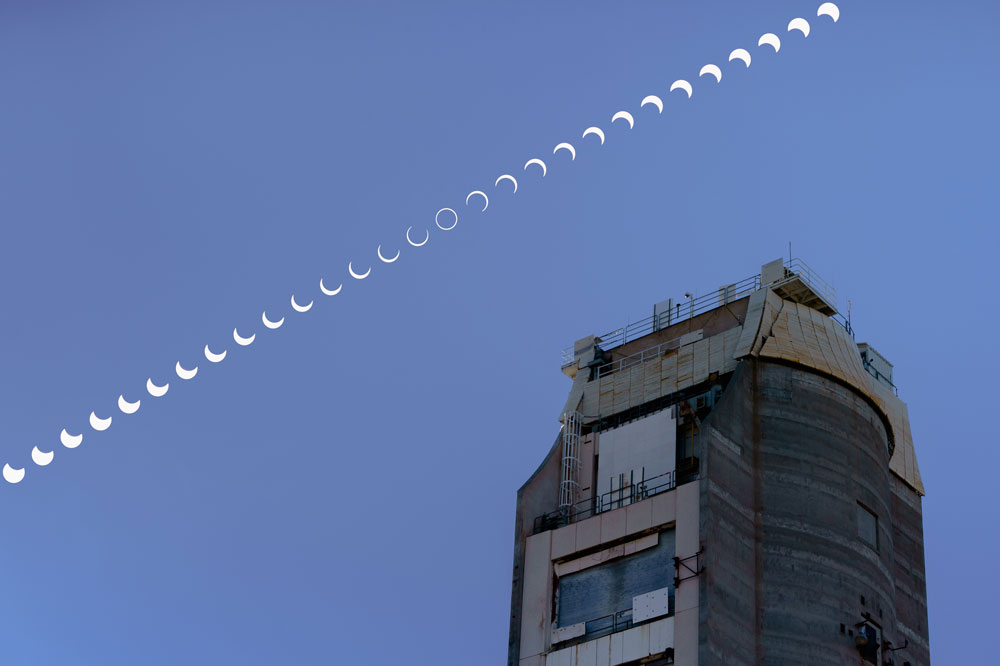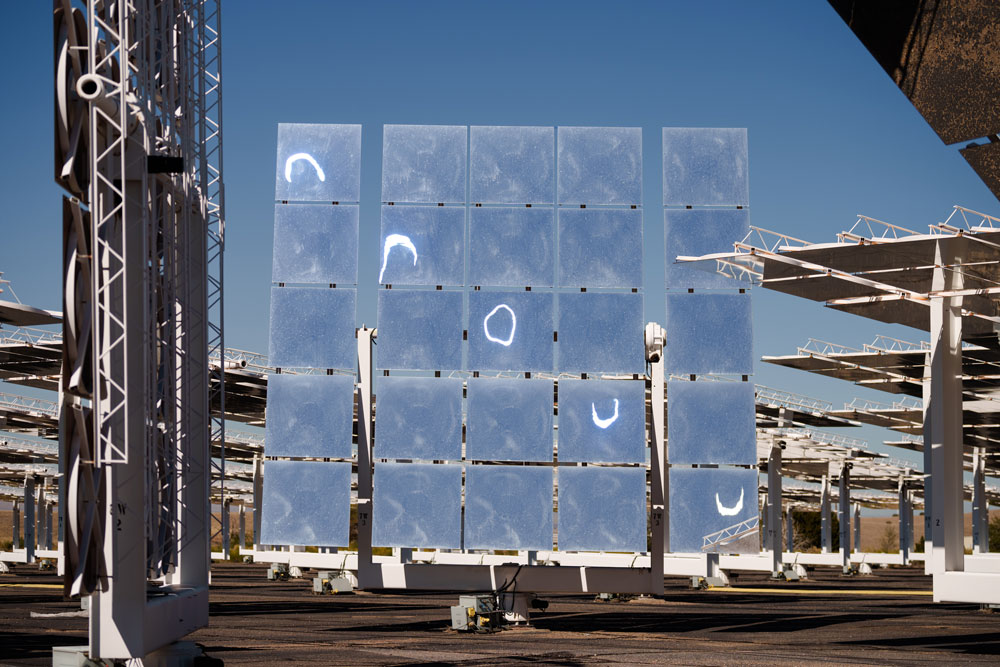
Phases of the annular solar eclipse are shown as it passes Sandia’s National Solar Thermal Test Facility in Albuquerque on Oct. 14. The first photograph includes multiple exposures as the sun and moon traveled left to right, as well as an exposure without the eclipse.

The second photograph comprises multiple exposures as the sun and moon traveled from bottom right to top left, through each segment of a heliostat, and a final exposure without the sun.
According to NASA, an annular solar eclipse occurs when the moon passes between the sun and Earth, but when it is at or near its farthest point from Earth. Because of this, the moon does not completely cover the sun. As a result, the moon appears as a dark disk atop a larger, bright disk, creating what looks like a ring around the moon.